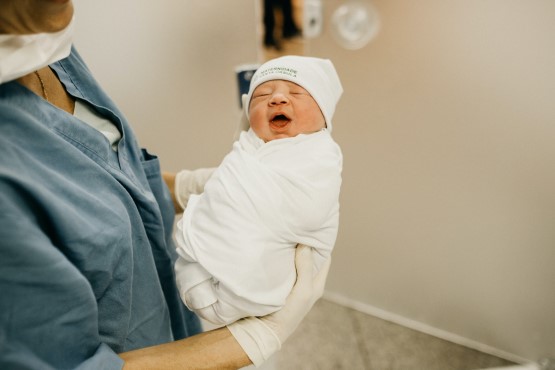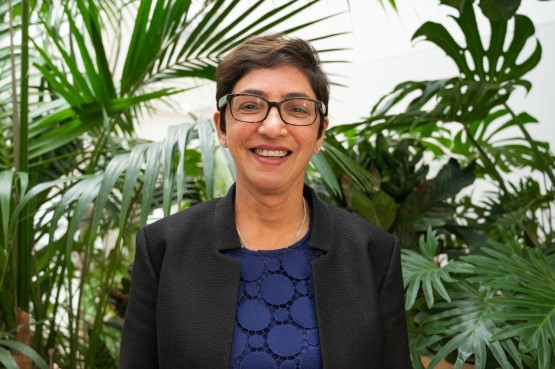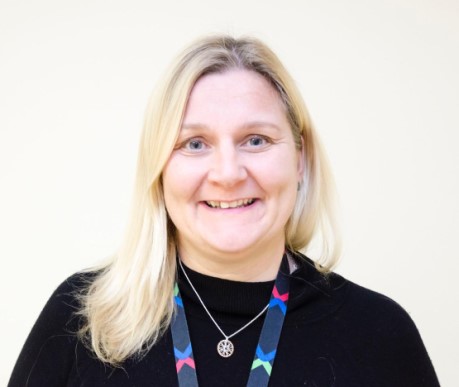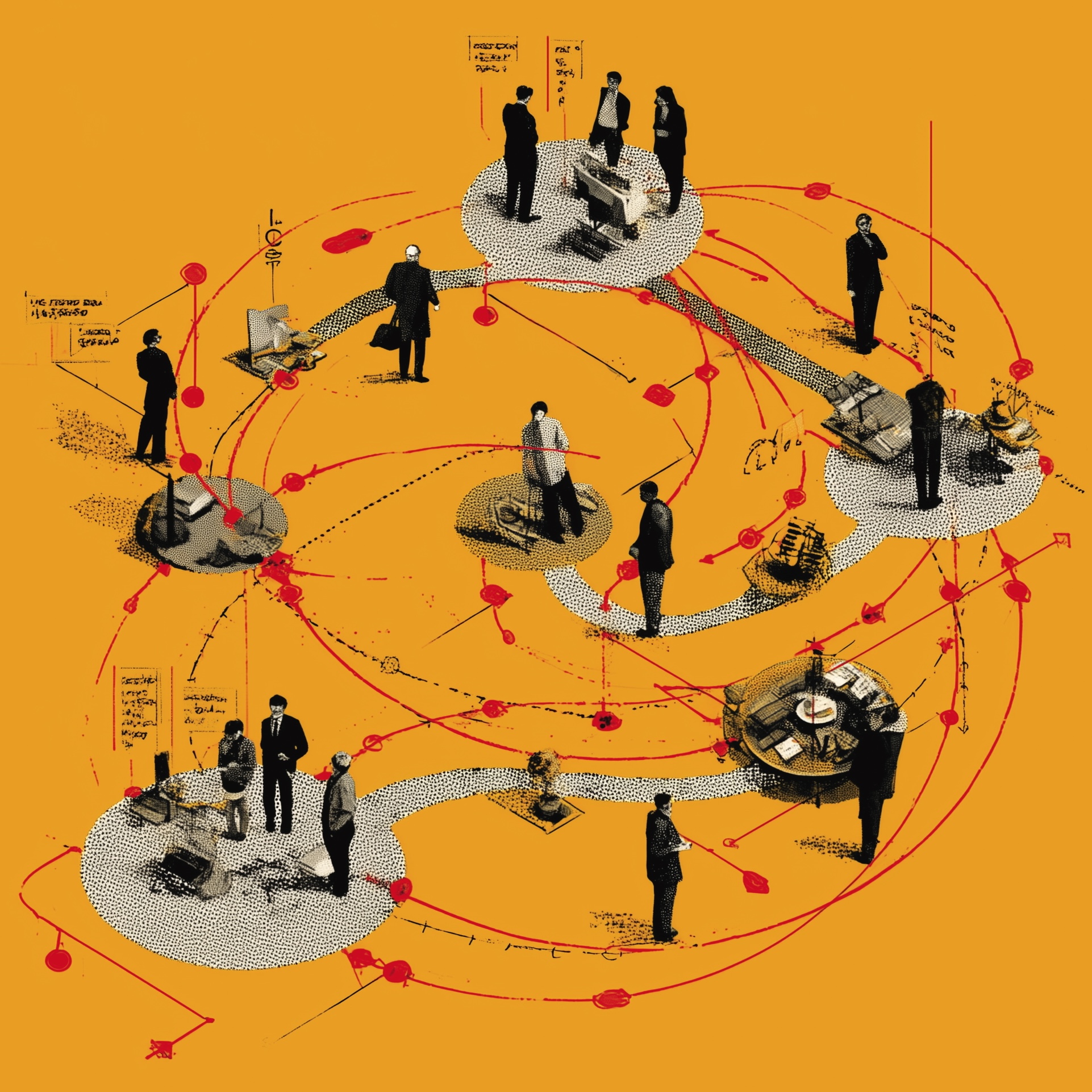Delivering postnatal care for the digital age
Even during the Covid-19 emergency, managers and clinicians are working to improve NHS services. We report on a digital project that is transforming the experience of postnatal care for women at Chelsea and Westminster hospital.

NHS postnatal care has been in “desperate need of innovation” for a long time, says Sunita Sharma, consultant obstetrician and gynaecologist at Chelsea and Westminster Hospital NHS Foundation Trust. “Nationally, there has been a longstanding challenge of unmet needs and poor experiences of women going through postnatal care, and it is in contrast with other aspects of maternity care,” she explains.
Wide-ranging shortcomings were highlighted in 2016 by a major review of maternity services by NHS England, undertaken as part of the NHS Five Year Forward View.
The Better Births report found postnatal services were “under-resourced and overlooked”. There was poor care coordination and “silo working” by different professionals and sectors, problems with communication and handovers, inefficient working practices that made mistakes more likely to occur, and a clear need for digital and accessible maternity records and integrated IT systems.
Local frustrations
Some 5,500 women give birth each year at Chelsea and Westminster Hospital which has a 27-bed postnatal care ward. During an average stay a mother and baby can will have contact around a dozen hospital personnel.
Surveys, interviews, workshops and focus groups conducted by the trust and other organisations identified the “frustrations” felt by women over their postnatal care.
It came across as “disjointed”, with a perceived lack of coordination between different staff members, women not feeling well-informed about what needs to happen or where they were in their pathway. In one survey, 30% of women felt the length of stay in hospital was not right while, nationally, 50% of women report delays in being discharged once they are fit to go home.
“What they felt was that the team members didn’t see the mum and baby as one unit,” Sharma comments.
The trust was still using paper-based and manual systems to coordinate postnatal care, patient notes, handover and discharge processes. Staff communication and instructions were via a traditional whiteboard. With so many professionals on the ward at one time, much time was spent “trying to get information and or give information to another team member”, recalls Sharma.
She and colleagues began to think about how they could “digitise” and streamline postnatal processes in order to improve team communication, coordination and efficiency, save time, minimise duplication of tasks and reduce delays for women on the ward.
 Sunita Sharma: “Post-natal care was in desperate need of innovation… patients didn’t feel the team treated mum and baby as a unit.” (Photo: Chelsea & Westminster)
Sunita Sharma: “Post-natal care was in desperate need of innovation… patients didn’t feel the team treated mum and baby as a unit.” (Photo: Chelsea & Westminster)
Sharma describes how the commonplace experience of ordering a pizza online encapsulated what they were aiming for – how consumers can track what’s happening to their order – “when it’s gone in the oven, when it’s having a quality check, when it’s on its way,” she says.
“I thought, this is what people were saying they wanted – ‘just tell us where I am in my journey, what’s happening to me, what needs to happen?’,” she adds. “We wanted to use technology to make us more efficient with our own time and improve experiences for women and staff who are working so hard.”
The digital suite
An initiative was developed as part of the CW Innovation programme, which is led by the trust and its official charity, CW+, working with the digital services company Lumeon.
“The innovative, postnatal digital suite co-ordinates the care of the mother and baby and brings together the care delivered by a large number of professionals on the postnatal ward into one platform,” says Pippa Nightingale, the trust’s chief nursing officer.
The project team worked closely with patient groups and clinicians from the start, including members of the local Maternity Voices Partnership and frontline staff members. They worked with Lumeon to digitise the postnatal pathway and meet the needs of those who receive and deliver care.
Chelsea’s system has centralised all the clinical, operational and administrative tasks, and populates the work list for each health professional in the multidisciplinary team. Staff can log on to the system from any trust computer to enter data and accept or update tasks to complete for patients. Updates display in real time.
Instead of a whiteboard, a large wall-mounted TV monitor displays a digital dashboard with a ‘traffic light’ system that allows staff to quickly see what they need to do next in order for each patient to meet their discharge slot. Traffic lights turn from red to green when a task is completed.
 Pippa Nightingale: “the digital suite has had a very real impact on women and staff experiences… and has continued to reduce delays associated with the discharge process.” (Photo: Chelsea & Westminster)
Pippa Nightingale: “the digital suite has had a very real impact on women and staff experiences… and has continued to reduce delays associated with the discharge process.” (Photo: Chelsea & Westminster)
The system tracks patients’ status and progress on their pathway and gives a clear overview of the care being delivered, says Sharma, allowing women in the ward to keep track of their care.
“Five red lights means you’re still a way from discharge but if there is only one red remaining you’re nearing home,” she explains. “If we have a bed flow problem I can see where… the bottleneck is. Within a minute, I can see what is stopping someone from going home.”
Before the system was introduced, the handover sheet for each patient had to be typed out by the ward team, and it was digitally stored on one computer and only accessible to midwives. “Now, everybody can access or update the handover sheet as it’s a ‘live’ document,” Sharma explains.
Challenges and results
Sharma says a key challenge for the project team was that it took a year from starting work to get all the necessary approvals for the new digital system. Staff were supportive, but were worried about “yet another system they had to log into”, she explains.
“Creating opportunities for interoperability in NHS systems has to be a priority”, she adds, because then “you get the best of all solutions and care is enhanced”.
Chelsea’s digital postnatal suite went live in December 2018, since when it has been used in the care of about 5,500 women and 5,200 babies. In the first evaluation, a year later, the trust measured the impact through observation and interviews. “Through engagement with women, frontline staff and the trust board, we’re seeing a wider range of benefits than we expected,” says Sharma.
Among what Sharma calls the “inspiring” improvements in many aspects of clinical care, is the better tracking of the physiotherapy needs of women discharged at evenings or weekends. Around 20% more women are now getting the physiotherapy help they need, helping the trust to deliver on the NHS Long Term Plan’s objective to improve access to physiotherapy services in maternity care.
Used optimally, the trust claims that at least ten to 20 minutes of staff time has been freed each day for clinical care because of better information transfer and the avoidance of multiple operational tasks.
Sharma reports that women and their families have welcomed being able to see where they are on the care pathway without disturbing the clinical team, and says there are now plans to further enhance this aspect of the project.
Sharma says she is “delighted” with how staff have engaged with the new system, and reports significant improvements to communications which have enabled quicker action to tackle discharge bottlenecks, better sharing of information and better accuracy in predicting bed availability.
The ability to capture and analyse data though the system will also support further service improvements, she says, while the technology could be adapted by other service areas with high patient turnover and large numbers of professionals providing care.
Chief nursing officer Pippa Nightingale says the new system has had a “very real impact on women and staff experiences, with a continued drive to reduce delays associated with the discharge process.
“Through the Covid-19 pandemic, this work has continued to support mothers who are leaving hospital more quickly after the birth and need to have access to their digital discharge records so they can share them with their community teams.”
The country needs to know about the extraordinary work NHS managers have been doing during the Covid-19 emergency. If you or your colleagues have a story, get in touch with the editor and we’ll make sure it gets told.
Related News
-

What now? Seven expert takes on the Ten-Year Plan
The government’s Ten-Year Plan for the NHS in England has met with enthusiasm and exasperation in equal measure. We asked seven healthcare experts to give us their considered view on one aspect that interests, excites or annoys them.
-

NHS job cuts: what are your options?
When politicians start reforming the NHS, there is only one certainty: some people will lose their jobs. But what options might be on the table and how does redundancy work? Corrado Valle explains.
-

We get knocked down. We get up again.
With its brutal NHS cuts and chaotic reform plans, the government is moving fast and breaking things (again). It will be up to managers to fix them (again), writes Geoff Underwood.